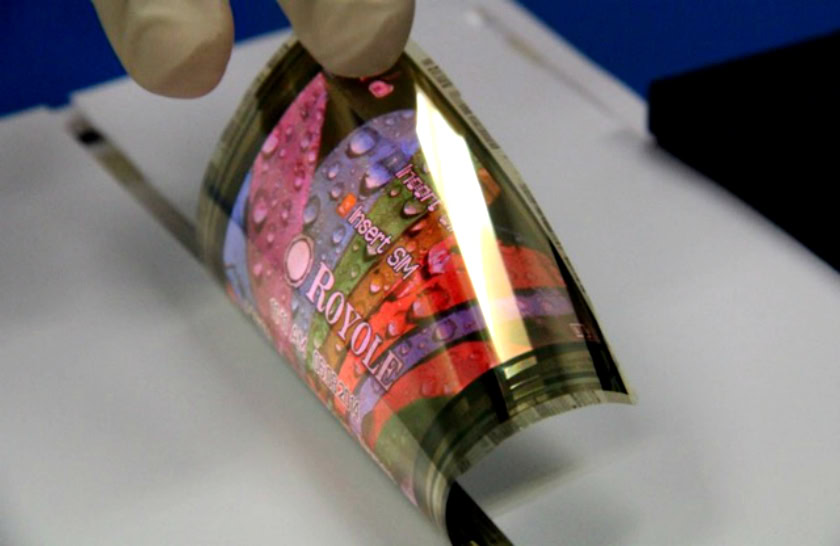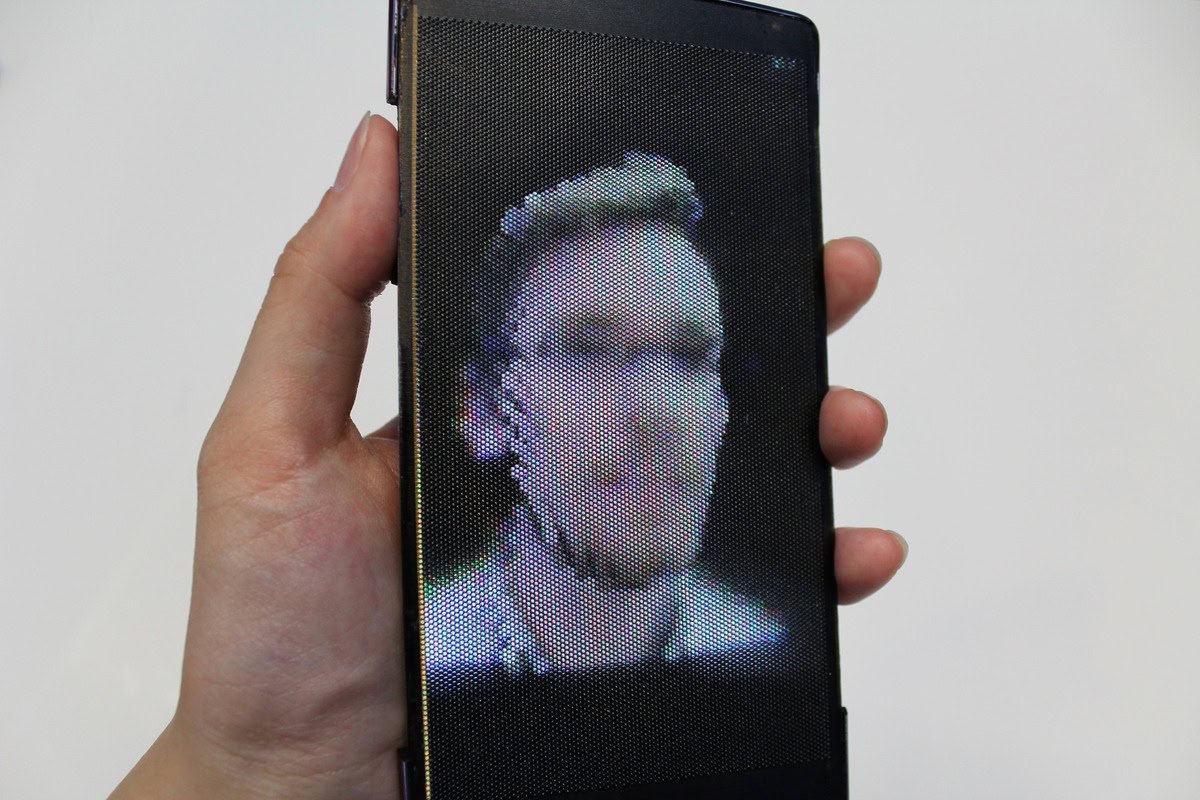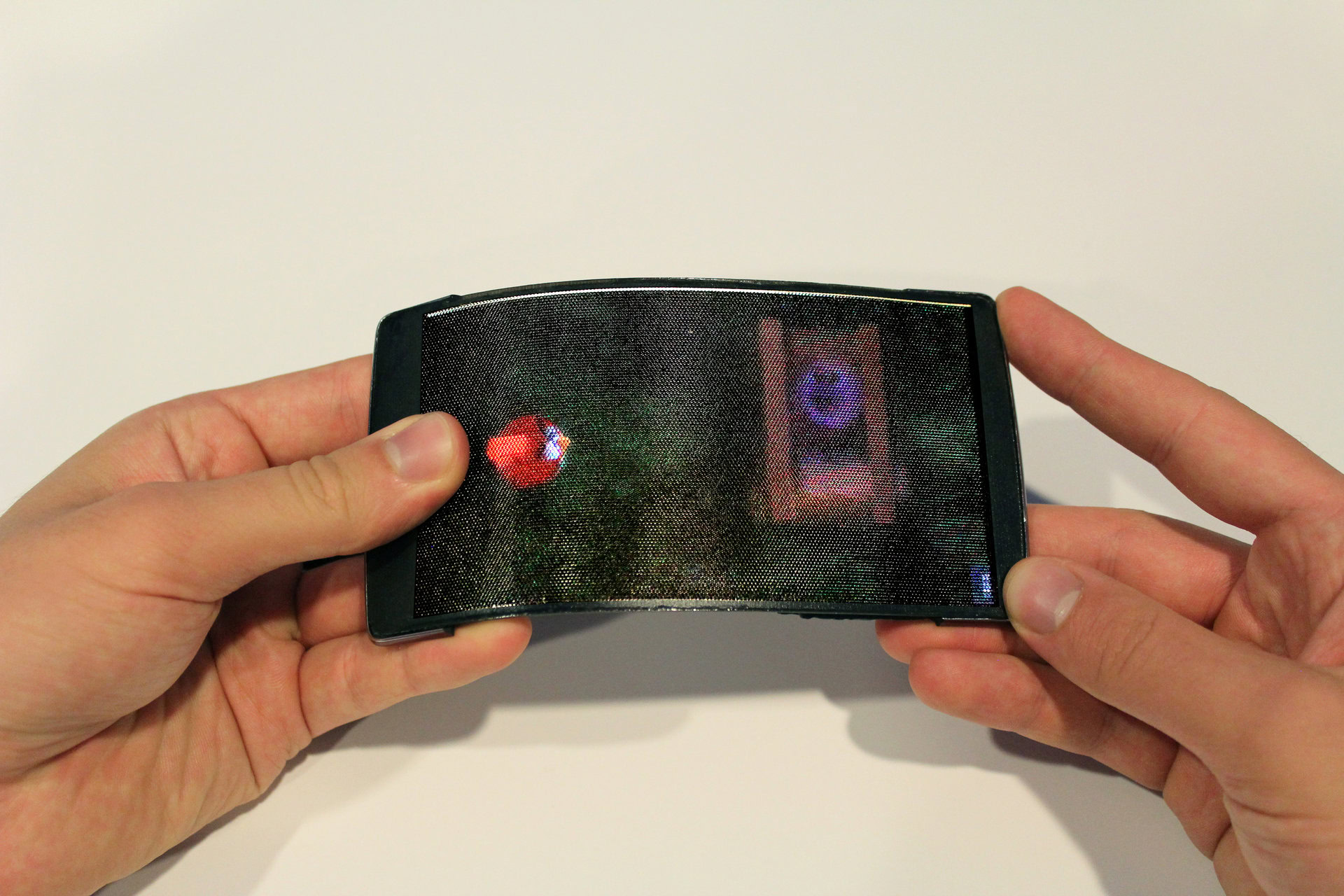Affiliate links on Android Authority may earn us a commission. Learn more.
HoloFlex is prototype Android smartphone with a flexible display and glasses-free 3D
The world’s first holographic flexible smartphone has arrived. Researchers at the Human Media Lab at Queen’s University have created an Android device that can not only display objects three-dimensionally without the use of glasses or head tracking, but it also takes advantage of bendable screen technology to allow for depth input. The device, called the HoloFlex, is still clearly a prototype, but it’s a strong foreshadowing of the direction mobile tech might take in the future.


“HoloFlex offers a completely new way of interacting with your smartphone,” said Dr. Roel Vertegaal, the director of the Human Media Laboratory. “It allows for glasses-free interactions with 3D video and images in a way that does not encumber the user.” Content displayed on the phone appears three dimensional when viewed from any angle by any number of viewers. The press release explains how this device works thusly:
HoloFlex features a 1920×1080 full high-definition Flexible Organic Light Emitting Diode (FOLED) touchscreen display. Images are rendered into 12-pixel wide circular blocks rendering the full view of the 3D object from a particular viewpoint. These pixel blocks project through a 3D printed flexible microlens array consisting of over 16,000 fisheye lenses. The resulting 160 x 104 resolution image allows users to inspect a 3D object from any angle simply by rotating the phone.
The video showcasing the device’s capabilities includes a demonstration of the Z-axis bend input feature being used to move around parts of a 3D rendered model. Furthermore, a 3D version of Angry Birds shows how the bend capability can be used to pull back the slingshot, with haptic feedback simulating the tension in the slingshot’s strap. When the bird goes flying at the pig in a parabolic arc, the model appears to rise in the Z-axis above the surface of the phone in a parabolic arc.

The HoloFlex will be officially unveiled at ACM CHI 2016 this coming Monday. Here’s hoping that someone snags some VR footage of this clever creation, because 2D video doesn’t quite do it justice. What do you think of the HoloFlex? Is this the direction smartphones are going to go, or are bendable screens and 3D just a passing novelty? Let us know your opinion in the comments below!